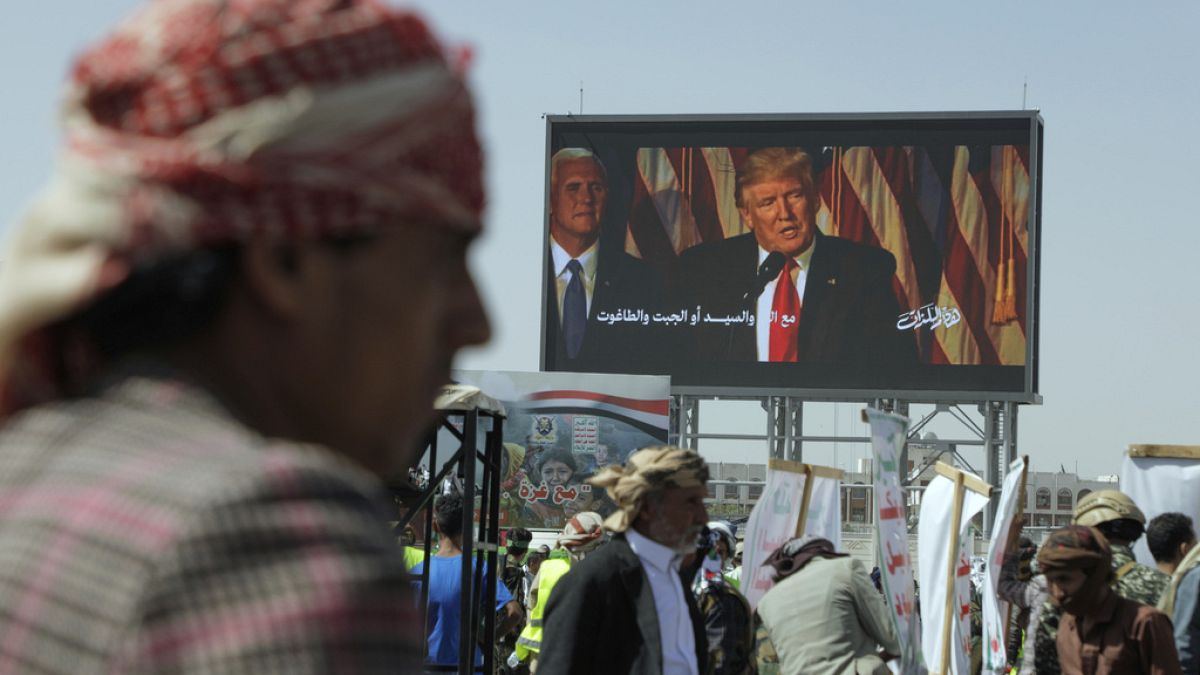Israeli Prime Minister Benjamin Netanyahu openly told the US broadcaster Fox News on Sunday that regime change in Iran "could certainly be the result" of Israel's operation there, because, he said, the government in Tehran was "very weak."
US President Donald Trump has meanwhile sent out contradictory signals. "We know exactly where the so-called 'Supreme Leader' is hiding," he announced on his personal social network, Truth Social. "He is an easy target, but is safe there — We are not going to take him out (kill!), at least not for now."
It remains unclear how long "for now" might last, however. The longer the conflict between Israel and an Iran goes on, the more tempting it might appear to Israel and the United States to get rid not just of the Iranian nuclear program, but of the Islamic Republic as well.
Disastrous consequences of attempted regime change
"It's extremely doubtful that it would be possible to bring about a regime change like that from the outside, with the push of a button," warns Eckart Woertz, the head of the German Institute of Global and Area Studies (GIGA) in Hamburg. "If it did come to that, whether things would then go in the right direction is a whole other question."
 Destruction in Tehran after an Israeli airstrike last weekImage: Sepah News/AFP
Destruction in Tehran after an Israeli airstrike last weekImage: Sepah News/AFPForeign-imposed "regime change" is a highly controversial concept. Under international law, it is a clear violation of the sovereignty of the affected state. Often, it is not democratically legitimized, and it frequently leads to a power vacuum or violence and instability. Newly installed governments often find themselves unable to cope with the challenge of resolving the country's problems, and this results in further crises and conflicts.
Afghanistan
This is was what happened in Afghanistan. After the terrorist attacks on New York on September 11, 2001, NATO invoked the mutual defense guarantee contained in Article 5 of the NATO Treaty for the first and (so far) only time. A Western military alliance led by the United States resolved to topple Afghanistan's Islamist Taliban regime, and fight the terrorist organization al-Qaeda.
Initially, it was quite successful, and by the end of 2001 the Taliban had been driven out of Kabul. But various parties to the alliance disagreed on a number of things, including how military, political and development aid should cooperate.
And so, for 20 years, the security situation remained extremely precarious. The country was devastated by attacks as the Taliban launched repeated counteroffensives. Between 2001 and 2021 around 3,600 Western soldiers and almost 50,000 Afghan civilians were killed. The Afghanistan mission cost a total of almost $1 billion (€868 million).
 Taliban fighters patrol Kabul in September 2021 following the hasty withdrawal of the Western military allianceImage: HOSHANG HASHIMI/AFP via Getty Images
Taliban fighters patrol Kabul in September 2021 following the hasty withdrawal of the Western military allianceImage: HOSHANG HASHIMI/AFP via Getty ImagesAfter the chaotic withdrawal of the US and its allies in the summer of 2021, the Taliban returned to power. Since then, they have rolled back almost all the progress made over the past 20 years. Afghanistan is isolated and desperately poor, with 23 million people dependent on humanitarian aid.
Iraq
The US once armed Iraqi dictator Saddam Hussein, who was in power for more than two decades. In 2003, however, it decided to overthrow him, with help of a "coalition of the willing," but without a mandate from the UN Security Council. Washington justified the decision with the assertion that Saddam Hussein was supporting al-Qaeda and was in possession of weapons of mass destruction — claims later proven to be false.
"Saddam Hussein was overthrown not because he possessed weapons of mass destruction, but because he did not possess them," the Middle East expert Eckhart Woertz says today. And, at the time, Iran took note.
 US soldiers and Iraqi civilians bring down a statue of Saddam Husein in Baghdad in April 2003Image: AP
US soldiers and Iraqi civilians bring down a statue of Saddam Husein in Baghdad in April 2003Image: APOnce Saddam Hussein had been toppled, the Americans installed a transitional government, which was later heavily criticized for mismanagement and lack of knowledge of the country.
Existing enmities between Iraq's different religious groups deteriorated into a situation akin to civil war between Sunni and Shia Muslims. Deadly attacks were an almost daily occurrence. Soldiers discharged from the Iraqi army started fighting the US troops who had previously toppled Saddam.
Twenty years after the American invasion and the attempted regime change in Iraq, the situation has improved. Violence has died down, and the next round of parliamentary elections is due to take place in November. Nonetheless, Iraq remains a country in the process of change.
Libya
Libya is also still suffering the consequences of an attempted regime change, which came from within and was flanked from abroad. In the wake of the Arab Spring, a civil war there began in 2011 with protests against the rule of longtime dictator Muammar Gaddafi. When attempted to put down the uprisings with bloodshed, NATO intervened militarily in the form of a no-fly zone to protect the civilian population. The regime held on for a few months. Then on October 20, 2011, Gaddafi was killed.
 Muammar Gaddafi was in power in Libya for 42 years, from 1969 to 2011Image: AP
Muammar Gaddafi was in power in Libya for 42 years, from 1969 to 2011Image: APBut a government acceptable to the entire country was never established. Instead, there have been years of further conflict between rival militias. The state has virtually disintegrated, with two different governments fighting for control since March 2022. The human rights situation remains extremely precarious.
Little chance for regime change in Iran
Aside from these cautionary examples from recent history, Eckart Woertz sees another problem: Ultimately, ground force would be required to force a change of government in Iran.
"I don't see a massively strong rebel movement within Iran that could topple the current regime," says Woertz.
And from outside? "While there was a successful regime change in Germany once, at the end of the Second World War, that required a ground invasion," says Woertz. "And then you need a transition backed by local people. It helps if there is a common external enemy — like the Soviet bloc after 1945 — which glosses over the differences. But regime change has never happened with aerial bombardment alone, and I don't think Iran will be an exception now."
This article was originally written in German.

 4 hours ago
3
4 hours ago
3









